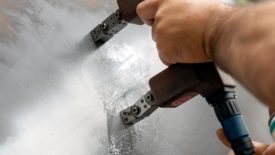Home » COVID-19
Articles Tagged with ''COVID-19''
Test & Inspection
The scope of leak testing applications continues to expand beyond traditional industries.
Read More
Management
2024 State of the Profession Survey: Skills, Satisfaction and Salary
Our State of the Profession Survey delves into each of these topics as well as top job concerns for quality professionals today.
June 5, 2024
Aerospace | AS9100
The Aerospace Quality Management System Rulebook – Time for a Change
Before starting the revision, the writing team asked what was good, what was not so good, and what needed changing.
July 17, 2023
Management | Robotics
As Robotics Gain Hold, Here’s How to Manage Them
The pandemic has only fueled the worker shortage, prompting manufacturers to embrace automation in large numbers. Senior leadership can ensure robotics are implemented correctly.
June 1, 2023
Quality 101
Automation’s Growing Role in Universal Testing
The pandemic proved just how important universal testers are to quality. As staff shorages endure, automation is keeping this technology on point.
May 10, 2023
Vision & Sensors | Cameras
The Changing Face of Smart Cameras in Machine Vision
Beyond the growth in applications brought about by improvements in CMOS sensor technology, another significant trend is the increase in applications that extend beyond the visible spectrum.
March 16, 2023
NDT | Magnetic Particle Inspection
Magnetic Particle Inspection Is Here to Stay
While magnetic particle inspection techniques have stood the test of time, the equipment involved has seen updates to keep up with demand, experts say.
February 16, 2023
From the Editor | Darryl Seland
Knowledge is Power
From Sun Tzu to Chuck McGill.
January 12, 2023
Test & Inspection
How a Shrinking Workforce Affects Testing and Inspection in NDT
As the pandemic and advances in technology impact the field, education and training remain paramount — especially for newcomers.
December 30, 2022
The Spending Forecast is Here
The 22nd Annual Quality Spending Survey Results
Concerns about Covid-19 are down, but inflation worries are up.
December 29, 2022
Stay in the know with Quality’s comprehensive coverage of
the manufacturing and metrology industries.
eNewsletter | Website | eMagazine
JOIN TODAY!Copyright ©2025. All Rights Reserved BNP Media.
Design, CMS, Hosting & Web Development :: ePublishing
.jpg?height=168&t=1738009418&width=275)











